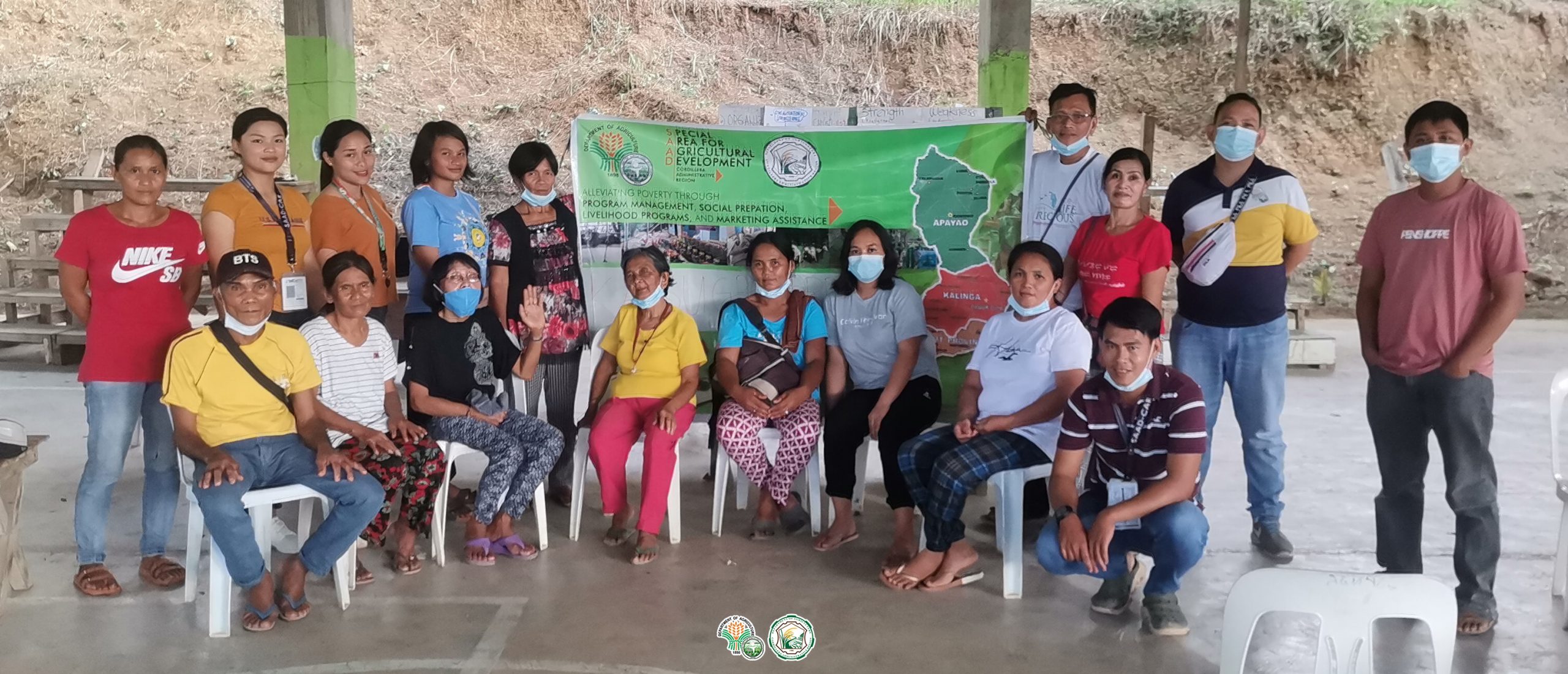APAYAO, July 22, 2022- Thirty-seven (37) farmers belonging to the Isnag indigenous community in Kabugao, Apayao earn from providing machine service through the mechanization initiatives of the Department of Agriculture- Special Area for Agricultural Development (DA-SAAD) Program.
Established with the help of the DA-SAAD and the Local Government Unit (LGU), the farmers were organized as the Luttucuan Farmers Association (LFA) whose primary goal is to increase food production in their community through adaptation of efficient farming tools and practices.
The LFA was registered under the Department of Labor and Employment (DOLE) in June 2017 and is composed of indigenous rural workers, specifically for the underemployed and home-based workers with identified capabilities to engage in entrepreneurial activities. With this, the group was granted one (1) unit of four-wheel drive tractor under the Rice Production Project implemented in 2018 worth Php 1.2 million (FY 2016).
This helped the group to accumulate a revenue worth Php 329,633.00 as service provider and provided the community with sufficient rice from 2018 to 2021.
As service providers
LFA treasurer Marcela Tomat, 57, shared that the tractor supports major farm operations such as ploughing, harrowing, sowing, harvesting, transporting, and making land preparation easier both for corn and rice production areas.
Before the intervention of DA-SAAD, Ms. Tomat recalled how agricultural technological advances primarily developed their farm operation from manual labor.
“Dati kamin nga service provider. Iti kaibahan lang ket manual nu kasta makitalon kami. Ngem idi manipud naikkan kami iti four-wheel drive, kasta meten nga imalisto iti operation mi manipud iti land preparation gana pinagga-gapas” (We have always been a service provider. The only difference is that whenever we do farm operations back then – we do it manually. But when the program provided a 4 wheel drive tractor to us, our farm operations have given us comfort and efficiency – from land preparation to harvesting period), said Ms. Tomat.
Rice and corn cultivation has two seasons (wet and dry) when farmers perform services from cultivation to harvesting activities. During the wet seasons, clients are paying at least Php 2,000 per hectare (ha) served. With this, the group earned Php 220,787.00 for the combined total of 110.39ha of rice area served in 2018 until 2021.
The same amount is charged per hectare during the dry season listing Php 108,846.00 income for 54.42ha of rice area harvested in 2018 until 2021. With this, the group has total revenue of Php 329, 633.00 (Table 1).
Table 1. Revenue generated from the four-wheel-drive tractor

Table 2. Fund Management

To date, regular inspection and maintenance are done every cropping season to prevent further damages.
The accumulated revenue per cropping season was apportioned into three: 55% for machine maintenance and labor costs, 30% for members’ incentives, and 15% for the association’s savings.
The role of mechanization in agricultural sustainability
By increasing harvest outputs, Mr. Bareng explained that before receiving the intervention, all they could think about was how to earn money for their daily expenses. But when they started to operate as service providers, they gradually learned how to listen and assist the needs of their community in terms of land preparation and harvest for faster and better quality of production.
“Idi manual labor kami pelang ket narigat nga talaga para kanyami. Makapangan kami lang maminsan wenu mamin duwa iti maysa aldaw ta pasaray Php 300 lang met matanggdanan mi bilang mannalon. Nu adda umanay igatang mi agserbi kusinan mayaten. Ngem tattan nga ada mabalbalin mi nga ag service provider, nasur-suru mi pay’n nga panunuten nga dagituy nga maproduce mi nga crops ket para metlang kaka-ili’an mi,” shared Mr. Bareng.
(When we were doing manual labor, it was really difficult for us. We can only eat at least once or twice a day because we only earn at least Php 300 as laborers. Back then, if we have something for our kitchen, we are already happy but not contended. But now that we are more capable and competent as service providers, we also learned how to consider the welfare of our community).
Problems encountered and Ways Forward
According to the beneficiaries, the number of clients in their municipality is increasing. This resulted in the association not being able to cater more clients. With this, the association is planning to purchase one additional unit of four-wheel drive tractor.
Furthermore, the sudden increase in gasoline prices had affected their usage of the tractor, which compelled them to increase their service fee as well.
Meanwhile, the group also plans to start selling feeds and other farm supplies in their barangay since the town proper is three (3) kilometers away from their barangay.
“Plano mi nga talaga agpatakder iti store tapnon aglako kami iti farm supplies dituy ayan mi ta adayu nga talaga iti centro dituy barangay mi. Agyaman kami unay amin nga tulong iti programa kadakami nga association” (We plan to establish a store for us to start venturing into farm supplies because we are aware that the town proper is too far from our barangay), expressed Ms. Tomat.###
Writer: Kathleen Faye B. Agonoy, DA-SAAD Apayao Information Officer


Comments (0)